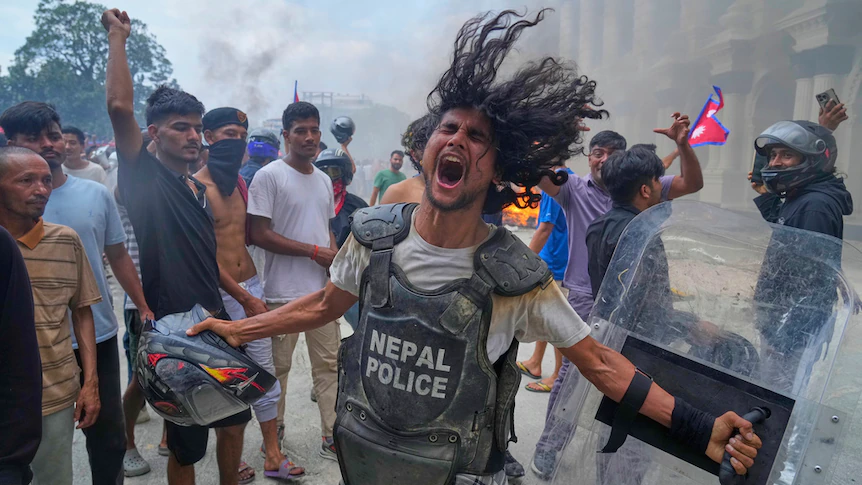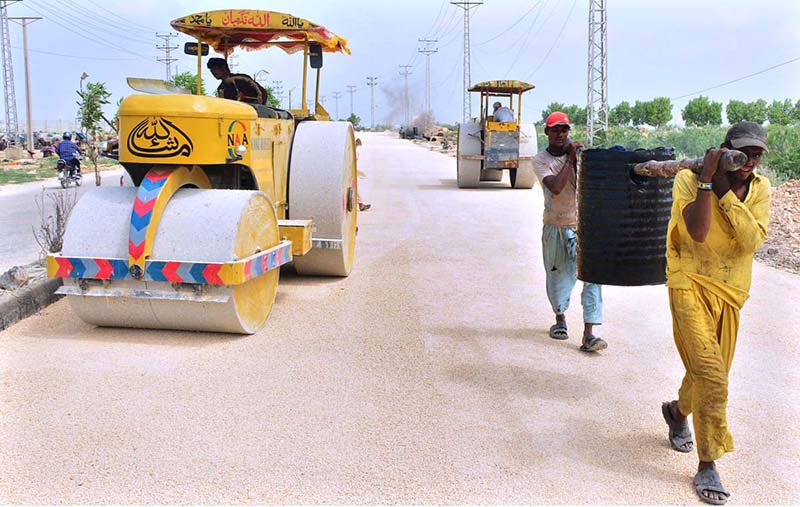By Karishma Vyas
Copyright abc

If the 1920s were roaring, the 2020s are shaping up to be the decade of rage, and not just in the United States. In the past five years we have seen mass protests escalate across Asia, toppling governments and bringing megacities to a standstill.
In 2022 the streets of Colombo erupted for more than 100 days amidst Sri Lanka’s worst ever economic crisis, leading to the dramatic fall of the powerful Rajapaksa clan and their government.
Two years later, Bangladesh’s once untouchable Prime Minister Sheikh Hasina fled the capital in a helicopter after crowds stormed her opulent palace and ended her 15-year reign.
In the last month alone, both Indonesia and Nepal have seen blood on the streets, and marches are planned across the Philippines today.
These protests throughout Asia follow examples of social media being used to supercharge protests in Egypt in 2010, Hong Kong in 2019 and Iran in 2022.
Protests come together on social media
These movements may be separated by time, distance and language, but they were all born on social media, led by a new generation of activists fed up with the old systems of corruption and nepotism.
“Social media is no longer just a site for entertainment and networking. It has increasingly become a political site,” said Dr DB Subedi, a lecturer in Peace and Conflict Studies at the University of Queensland.
“Governments are not able to deliver on their promises. Social media is providing a platform for the exchange of ideas, but also to voice dissatisfaction and anger.”
Recently in Nepal and Indonesia, platforms like TikTok, Instagram and Discord were critical in both inflaming popular discontent and helping Gen Z activists organise a rebellion. In Indonesia, fury over lavish benefits for government ministers followed by the viral video of a delivery driver being killed by a police vehicle triggered the August demonstrations.
Misinformation spread like fire
In Nepal, it was the government’s attempt to ban platforms, but more importantly it was the proliferation of the #NepoBabies videos that whipped up emotions.
They showed children of politicians flaunting luxury European holidays and extravagant weddings juxtaposed next to images of Nepal’s extreme poverty. In a country where 20 per cent of young people can’t find a job, users were convinced that politicians were dipping into their taxpayer money to fund their lux life.
“A lot of youth were sharing their experiences of when they had to deal with government agencies. They found out that there are so many like them who had experienced things they wouldn’t have if governance worked in Nepal,” Ujjwal Acharya, the Project Head of NepalFactCheck.org in Kathmandu, said.
“This is the role that social media played in organising youth. Even though they were fragmented, even though they were leaderless, they needed to do something if they wanted a better future for themselves.”
In just days, a campaign that had started on Reddit and Discord, engulfing cities across Nepal and overthrowing the government of prime minister K.P Sharma Oli.
Yet, within those critical hours, the social media platforms that had so effectively brought people together were also sabotaging the movement they had helped create.
“A lot of misinformation was being spread at this time,” Acharya, who was monitoring social media, said.
“For a day there was misinformation saying that it’s a military coup… This was dangerous because people were trying to taint the army, saying that they were acting on behalf of a foreign power and had imprisoned all the leaders.”
Other posts spread rumours that a sacred Hindu temple was under attack, and that the protests were a ploy to reinstall the monarchy, scenarios that could easily trigger a violent public backlash.
Perhaps the greatest damage inflicted by social media users was a map of Kathmandu that was widely circulated and identified the residences of political leaders. Rabi Laxmi Chitrakar, the wife of a former prime minister, sustained severe burns after a mob set fire to her home.
“The map was developed for the youth to go in front of the houses of the politician and demonstrate. It wasn’t meant to be used to go to the houses and set them on fire,” said Acharya.
“This is an example of how even the things that were spread with good intention can go bad.”
Fears ahead of election
In a single afternoon an arson spree across the city destroyed the parliament, the Supreme Court and key ministry buildings for education, health and energy. The Special Court, which ironically prosecutes corruption cases, also went up in smoke.
“The original organisers never wanted to go to the parliament, never wanted to attack the parliament,” Acharya said.
“When you look at these people who were on the gate of the parliament building trying to force their way in, they don’t look like they were gen Z.
“But when the police started using heavy-handed tactics, innocent protesters who had no idea that this would flare up into live ammunition firing were hit.”
In the aftermath of Nepal’s frenzied Gen Z revolution, some grim lessons are emerging, as well as signs of what the future may hold.
“Most of the content used during this was either rumours, or content that was very easy to identify (as misinformation),” said Acharya.
“What will happen if people have time to plan for this? We have elections in six months. Groups who intentionally want to spread misinformation, they have time to plan.”



